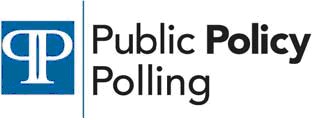There's been a fundamental shift in the Ohio political landscape over the last three months and it looks like the biggest beneficiary of that could be Sherrod Brown.
When PPP polled Ohio in December Brown looked extremely vulnerable for reelection, polling at only 40-43% in match ups against four potential Republican opponents. That gave him anything from a tie (against Mike DeWine) to an eight point lead (against Jim Jordan.) Now Brown is at 48-49% against six different Republicans we tested and his leads range from 15 to 19 points.
There are not big differences among the GOP candidates in how they fare against Brown. Drew Carey and Secretary of State Jon Husted come the closest to him, each trailing by 15 points at 49-34. Treasurer Josh Mandel does next best, trailing by 16 points at 48-32. He's followed by Congressman Steve LaTourette, who has an 18 point deficit at 48-30. And bringing up the rear are Congressman Jim Jordan and Lieutenant Governor Mary Taylor, each down by 19 at 49-30.
Brown's margins are probably a little bit inflated. The cast of potential Republican candidates is extremely obscure- taking Drew Carey out of the equation for the moment, Taylor leads the folks we tested in name recognition at a whooping 28%. Husted's at 27%, LaTourette and Mandel are at 25%, and Jordan's at just 17%. Because of the limited profiles of their potential candidates there are far more undecided Republican voters than Democrats in all of these prospective match ups. That means if one of them ran and became better known they'd likely pull closer, but still with Brown at 48-49% he doesn't have far to go right now to get over the 50% line. You can see why GOP candidates aren't exactly lining up right now to make this race.
The best way to understand how things have changed since December is probably to look at the match between Brown and Taylor. Brown led her by only 2 points in the previous poll, but now has a 19 point advantage. Things have stayed pretty much identical with Republicans- they supported Taylor 68-8 then and they support her 64-7 now. Brown certainly doesn't have a lot of crossover support. With independents though Brown's blown it open. He and Taylor were tied with them in December, but now he has an 18 point lead with them at 44-26.
Also whereas some conservative Democrats both at the polls in the November and on our poll in December were straying from the party at the federal level, Brown now leads within his own party 86-3 against Taylor. It was only 72-15 the last time we looked at this race. Whether it's John Kasich doing it or something else independents and conservative Democrats' preferences are all of the sudden looking a lot more like 2008 than 2010.
Finally some notes on Drew Carey's numbers. Although he's been mentioned (not terribly seriously) as a potential Republican challenger to Brown he's actually better liked by Democrats in the state. His overall favorability is 29/13 but it breaks down 35/10 with Democrats compared to 24/15 with Republicans. Independents fall in between at 27/16. Carey does have one thing most politicians would die for- popularity across party lines- but it doesn't look like he'd be a viable Senate candidate even if he was interested, which he's not.
Full results here
Wednesday, March 16, 2011
Subscribe to:
Post Comments (Atom)




1 comment:
you are going to see alot of this kind of result, with the republican governors attacking the middle class and working men and women. the right has proven once again that the dont care one bit about the average citizen, they only care about the very rich, they were elected this last time by a public that wanted something done quickly about the economy and the job situation, but they have done nothing but push their social agenda and haven't offered one bill or one original idea about jobs or our economic recovery. Their answer to everything is give all money, support, and advantage to the rich and say no to everything Obama does, even if it was their idea in the first place, for example look at Newt's take on the Libyan situation or Boner's take on the use of U.S. planes to enforce the no-fly zone.
Post a Comment